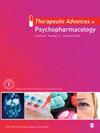服用长效注射抗精神病药物或口服抗精神病药出院的精神分裂症非自愿住院患者的再住院时间
IF 3.4
3区 医学
Q2 PHARMACOLOGY & PHARMACY
引用次数: 1
摘要
背景:非自愿住院的精神分裂症患者出院后往往预后较差。目的:分析非自愿住院的精神分裂症患者服用长效注射抗精神病药物(LAIs)或口服抗精神病药物(OAPs)出院后6个月内再住院的时间。此外,还探讨了排放时LAI利用的时间趋势。方法:将2006年至2019年非自愿住院的精神分裂症患者(n = 806)纳入分析。生存分析用于比较使用LAIs和oap的患者,以及第一代抗精神病药物(FGA) LAIs和第二代抗精神病药物(SGA) LAIs的患者在出院后6个月内的再住院时间。采用Cochran-Armitage趋势检验来检验在研究期间出院时LAIs的使用是否存在时间趋势。结果:LAIs组(n = 231)再住院率明显低于OAPs组(n = 575),再住院时间明显长于OAPs组(n = 575)。FGA-LAIs和SGA-LAIs出院个体的再住院率和再住院时间无显著差异。排放时LAIs使用率从2006年的16.77%显著上升至2019年的50.00% (Z = 6.81, p < 0.0001)。在所有LAIs中,只有SGA-LAIs在放电时的使用率显著增加(Z = 5.74, p < 0.0001),而FGA-LAIs没有显著增加。结论:LAIs在预防再住院方面优于oap。然而,SGA-LAIs与FGA-LAIs在降低再住院风险方面具有可比性。在研究期间,非自愿住院的出院个体,尤其是SGA-LAIs的使用显著增加。本文章由计算机程序翻译,如有差异,请以英文原文为准。
Time to rehospitalization in involuntarily hospitalized individuals suffering from schizophrenia discharged on long-acting injectable antipsychotics or oral antipsychotics
Background: Involuntarily hospitalized individuals suffering from schizophrenia often have a poorer prognosis after discharge. Objective: This study aimed to analyze time to rehospitalization within 6 months of discharge in involuntarily hospitalized individuals suffering from schizophrenia discharged on long-acting injectable antipsychotics (LAIs) or oral antipsychotics (OAPs). In addition, temporal trends in LAI use at discharge were explored. Methods: Involuntarily hospitalized individuals suffering from schizophrenia discharged from the study hospital between 2006 and 2019 (n = 806) were included in the analysis. Survival analysis was used to compare time to rehospitalization within 6 months of discharge between individuals discharged on LAIs and OAPs, and between first-generation antipsychotic (FGA) LAIs and second-generation antipsychotic (SGA) LAIs. The Cochran–Armitage trend test was used to test whether a temporal trend existed for LAIs use at discharge during the study period. Results: The LAIs group (n = 231) had a significantly lower rate of rehospitalization and a significantly longer time to rehospitalization than the OAPs group (n = 575). Rehospitalization rate and time to rehospitalization were not significantly different between individuals discharged on FGA-LAIs and SGA-LAIs. LAIs use at discharge grew significantly from 16.77% in 2006 to 50.00% in 2019 (Z = 6.81, p < 0.0001). Among all LAIs, only use of SGA-LAIs at discharge increased significantly (Z = 5.74, p < 0.0001), but not FGA-LAIs. Conclusions: LAIs were superior to OAPs in preventing rehospitalization. However, SGA-LAIs were comparable with FGA-LAIs in reducing rehospitalization risk. Use of LAIs increased significantly in discharged involuntarily hospitalized individuals during the study period, especially SGA-LAIs.
求助全文
通过发布文献求助,成功后即可免费获取论文全文。
去求助
来源期刊
CiteScore
7.90
自引率
2.40%
发文量
35
审稿时长
10 weeks
期刊介绍:
Therapeutic Advances in Psychopharmacology delivers the highest quality peer-reviewed articles, reviews, and scholarly comment on pioneering efforts and innovative studies across all areas of psychopharmacology. The journal has a strong clinical and pharmacological focus and is aimed at clinicians and researchers in psychopharmacology, providing a forum in print and online for publishing the highest quality articles in this area.

 求助内容:
求助内容: 应助结果提醒方式:
应助结果提醒方式:


